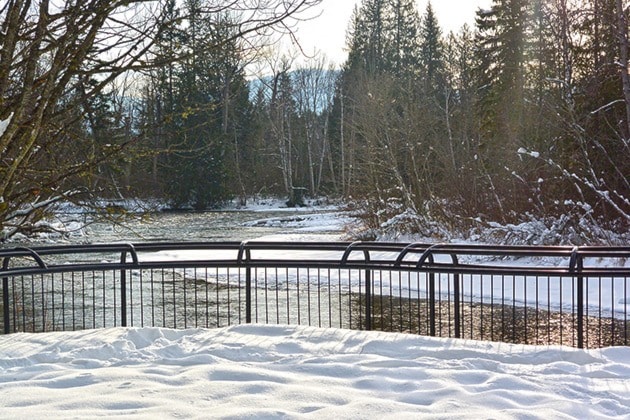Where are the fish and what is being done about it?
These are questions members of The Adams River Salmon Society would like to discuss with a wide variety of stakeholders.
In a letter to North Okanagan-Shuswap MP Mel Arnold, directors on the society’s board submitted their concerns with the decrease in reproducing salmon in the Adams River Watershed and related river systems.
The letter points out the Shuswap regional sockeye spawning grounds are the largest in North America and the dominant-year “Salute to the Sockeye” is the largest event that the Department of Fisheries and Oceans participates in.
“We realize there are multiple factors to consider with respect to the above, but we would like to direct your attention to the possible epidemiological threat posed by Pacific fish farms,” states the letter which was written to Arnold prior to the vote on Bill C-228. “We feel the government must take a stand against any program that can pose further threat to the Salmon fishery.”
Adams River Salmon Society chair Don Paterson says the group was disappointed that while members were advised in October that Arnold’s office had received the letter, the MP did not respond further.
Paterson says the bill, had it passed, would have closed open systems for salmon farms on the West Coast in order to reduce contact between wild and farmed salmon.
While disappointed that Arnold voted against the bill, Paterson says he understands and suspects the reasoning behind Arnold’s vote is that aquaculture is a huge industry in Canada.
“I think his aim was to look at the jobs and find some way to also address the concerns about the wild salmon,” says Paterson. “But his job is to hear local concerns and I think there were a fair number of people who wondered whether or not farmed salmon are a danger to the wild salmon.”
Paterson acknowledges there are many other factors involved, including water temperature, pollution, over-fishing, industrial runoff and any other kind of degradation of the rivers.
“There’s a lot to be looked at and Bill C228 was only one facet of it,” he said. “Because he’s our parliamentary rep, we think it’s in everybody’s best interest to be open to discussion involving a lot of stakeholders.”
Arnold meanwhile says he is open to conversing with the salmon society and other stakeholders.
He says that farmed salmon is B.C.’s highest-valued agricultural export and supports more than 5,000 jobs with and economic benefit of more than $1.1 billion – just in B.C.
He says there has been talk that the federal government will introduce a separate aquaculture act outside of the fisheries act.
“That is something that is probably going to be looked at, and that is the interaction between wild salmon and farmed salmon,” Arnold says, noting there needs to be further investigation into the science and the potential of disease and disease transfer. “There have been significant steps in moving and improving some of the fish farms and there’s no definitive proof at this point, but we certainly need to look at the possibility.”
In terms of the number of returning salmon, Arnold says it is baffling that the 2009 Adams Lake late sockeye run was so low that the Cohen commission was struck to investigate fish stocks.
“The following year, the run broke records; it was a 100-year run,” he says. “It’s a $1 billion industry; we’ve seen allegations of (degradation due to) farming and the forest industry on watercourses, and we would never say shut that down in five years.”
But Arnold offers assurances that the matter of decreasing salmon runs is one he will focus on for the rest of his term.
